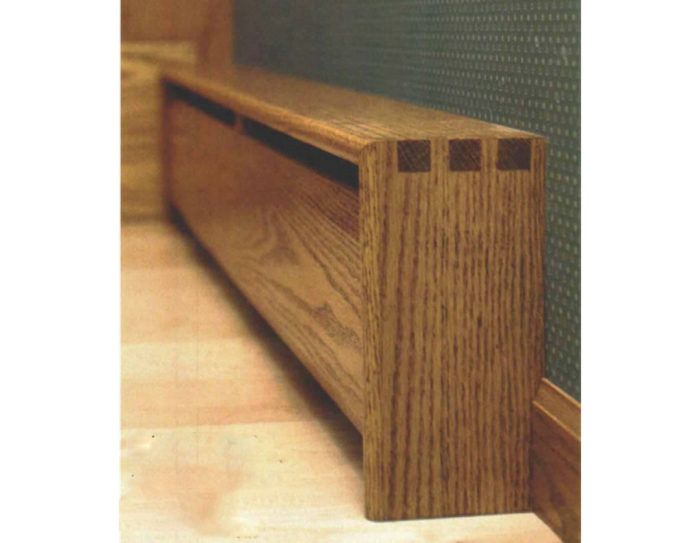Building Wood Baseboard-Radiator Covers
A little easy-to-assemble trim dresses up these homely metal heaters.

Synopsis: This short article shows how a little planning and some time in the shop will yield wood covers that replace the unattractive metal housings on baseboard radiators.
A couple of years ago, I was trimming out a living room in walnut and butternut. The place looked great, except for the metal baseboard radiator covers. They looked obnoxious. I decided that before I wrapped up the job, I would find an attractive way to disguise them.
At home, I thumbed through George Nakashima’s book, The Soul of a Tree, and discovered that Mr. Nakashima felt the same way I do: His baseboard radiators were covered with wood.
So I started researching the subject and experimenting with different ways to assemble radiator covers. I came up with some simple design and joinery solutions to camouflage both short and long radiators.
We don’t want it to catch fire
Safety was my first concern. I got a tech sheet from my plumber that details the spacing needed for air to circulate properly. Basically, you need 1 in. of clearance at both the top and bottom of the front piece.
I keep the clearance between the radiator fins and the wooden cover the same as it is between the fins and the front of the existing metal cover, which I remove before I begin installing the wooden cover.
Baseboard-heating units, my plumber told me, generate between 500 Btu and 600 Btu per lineal foot. This would put the temperature at about 180°F maximum, which is not high enough to combust wood. The same holds true for electric radiators. I leave a gap between the face piece and the floor, giving plenty of room for air circulation and cleaning. The 1-in. to 1½-in. opening at the top is enough for warmed air to escape.
I also contacted several hydronic-baseboard radiator manufacturers. They told me that the metal trim they sell with their radiators probably works better than wood because it reflects heat. They had never tried wooden covers and could only speculate they would make the system inefficient. They weren’t terribly enthusiastic about my idea, but I understand that selling metal covers is part of their business.
Nevertheless, I’ve built and installed wooden covers for radiators in entire homes and for units in rooms that have vaulted ceilings, and I’ve never had any problems with heat flow, warmth, or boiler malfunction.
Easy-as-pie construction
A single short radiator run can be covered with just five pieces of wood: the two ends, the top, the face piece, and a screw block or ledger strip for attaching the cover to the wall. Runs of more than one radiator are merely extended from the end piece of the last run. I use dowels to make that connection, but biscuits would work just as well. If the cover is 8 ft. or more in length, I screw a block, or leg, to the back of the face piece in the middle to support it.
For more photos, drawings, and details, click the View PDF button below:


























